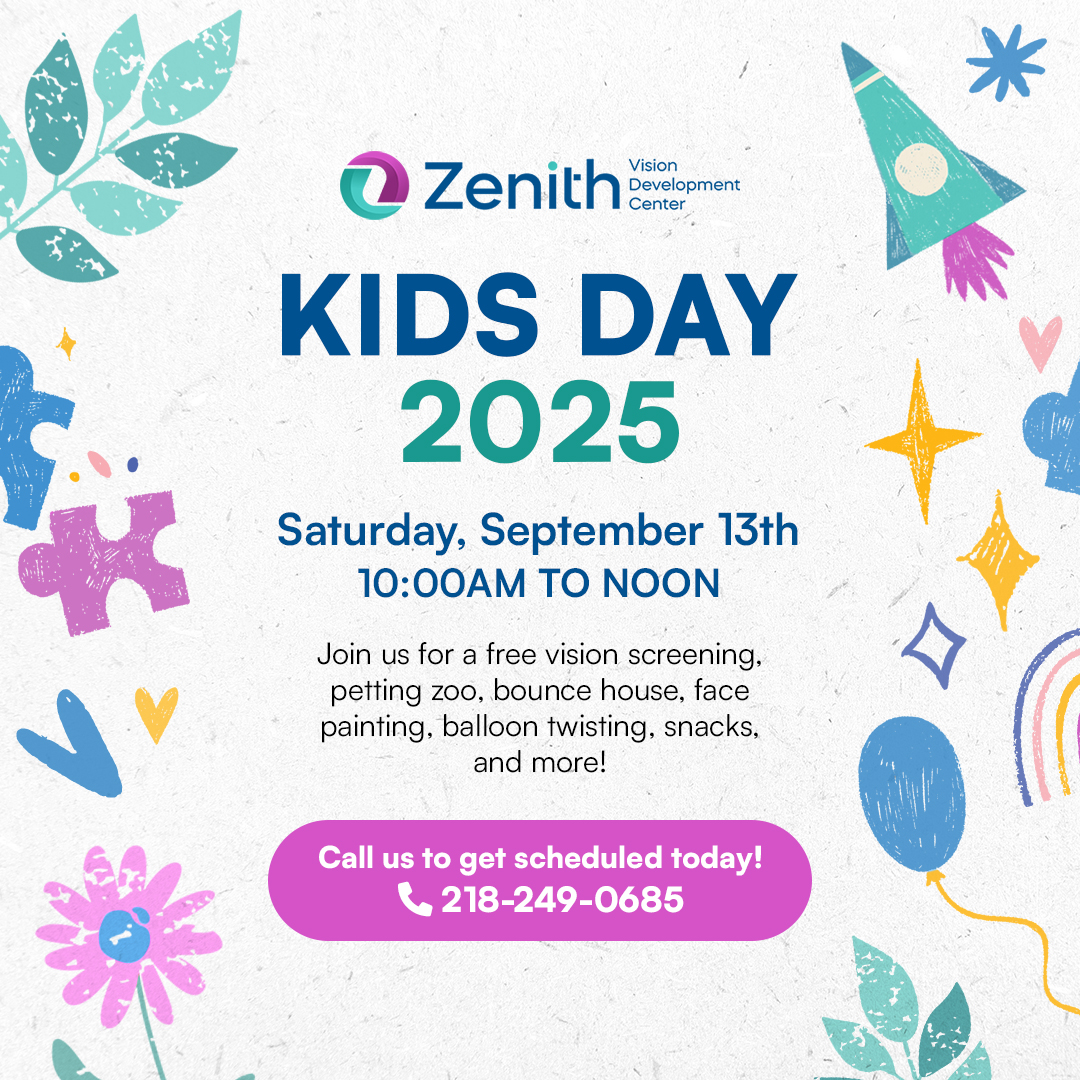
When children struggle in school, parents and teachers often assume the issue lies in attention, motivation, or even learning disabilities. However, in many cases, the real challenge may be related to vision.

In Northern Minnesota, more families are noticing that their children are becoming nearsighted at an early age. Known as myopia, this vision condition makes it difficult to see things clearly at a distance. While glasses can help correct the blur, they do not stop myopia from worsening over time. At Zenith Vision Development Center, we are committed to helping families in our community understand the importance of early detection and treatment to protect their children’s vision and overall development.

At Zenith Vision Development Center, we see children and adults struggling with more than just blurred vision—sometimes, the real challenge lies in how their eyes move. Eye tracking issues may not always be obvious, but they can have a profound effect on reading, writing, and overall learning.

When it comes to vision, many of us think of seeing clearly as a simple matter of getting the right prescription. However, for millions of people, visual challenges extend far beyond the clarity of their eyesight. Visual issues like double vision, trouble focusing, and difficulties with depth perception can have a profound impact on daily life, learning, and even self-confidence.

Vision therapy is a personalized, non-surgical treatment program designed to improve visual skills and abilities. It involves a series of specialized exercises and activities that target the visual system, including the eyes, brain, and the connection between them. The goal of vision therapy is to enhance visual processing, improve eye coordination, and address a variety of vision-related issues, ultimately enhancing an individual's overall visual performance and quality of life.

Strabismus, commonly known as crossed eyes or wandering eyes, is a condition that affects the alignment of the eyes. It occurs when the eyes are not properly coordinated, causing them to look in different directions. This misalignment can be present all the time or only occur when you're tired or stressed. By understanding the causes and symptoms of strabismus, recognizing the importance of early detection, and actively participating in vision therapy, you can take control of your treatment journey.

Vision therapy is a specialized form of therapy designed to improve and enhance visual skills and processing. It is commonly used to treat a wide range of eye conditions and learning challenges, helping individuals of all ages improve their visual abilities and overall quality of life. By understanding the importance of consistent and frequent vision therapy, you can take control of your visual health and unlock your full potential.

Amblyopia, often referred to as "lazy eye," is an early childhood condition where the eye does not achieve normal visual acuity, even with prescription glasses or contact lenses. According to the American Optometric Association, it is the most common cause of decreased vision among children. However, with early detection and treatment, individuals affected by this condition can lead a life with improved vision. Vision therapy has shown tremendous promise in the treatment of amblyopia.

Parents often worry about their child's academic performance and may seek ways to support their success in school. Many people do not realize the benefits of vision therapy. Investigating the connection between vision therapy and academic success can be helpful. This is because vision problems can hinder learning and influence academic performance.

From the moment we open our eyes each morning to the second we close them at night, our vision is an integral part of how we perceive the world. But what if our vision is less than optimal? This is where vision therapy comes into play. Vision therapy is a highly effective non-surgical treatment, which improves vision and resolves visual issues by strengthening the eye-brain connection.









